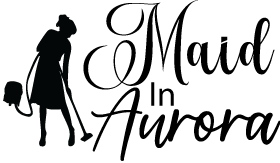Top 100 Cleaning Questions - Part 4
Floor Care and Maintenance Strategies
What's the best approach for different types of hardwood floors?
Hardwood floor maintenance requires understanding your specific floor finish and adapting cleaning methods accordingly. For surface-sealed floors (the most common), use a microfiber dust mop daily to remove particles that can scratch the surface. Weekly cleaning should involve a damp (not wet) mop with a cleaning solution specifically formulated for hardwood. Never use steam cleaners or excessive water, which can penetrate the wood and cause warping. For penetrating-seal treated floors, use only dry cleaning methods and specialized wood floor cleaners. Address spills immediately to prevent staining, and use furniture pads to prevent scratching. Consider professional refinishing every 3-5 years depending on wear patterns.
How should different types of tile floors be cleaned?
Tile floor cleaning varies based on material composition and texture. Ceramic and porcelain tiles require regular sweeping or vacuuming to remove abrasive dirt, followed by mopping with a pH-neutral cleaner. Natural stone tiles like marble or travertine need special care using non-acidic cleaners to prevent etching. For textured tiles, use a soft-bristled brush to clean grout lines and surface texture. Unglazed tiles may need periodic sealing to prevent staining. Always work in small sections, changing cleaning solution frequently to prevent dirty water from settling in grout lines. Test new cleaning products in an inconspicuous area first to ensure compatibility.
What's the most effective way to clean and maintain carpet?
Carpet maintenance requires a multi-layered approach combining daily, weekly, and annual care. Vacuum high-traffic areas daily and complete rooms 2-3 times weekly, using slow, overlapping strokes to remove embedded dirt. Address spills immediately by blotting (never rubbing) with clean white cloths, working from the outside toward the center. Use appropriate cleaning solutions based on carpet fiber type and stain composition. Deep clean carpets annually using hot water extraction methods, either professionally or with rented equipment. Consider implementing a shoe-free policy and using entrance mats to reduce dirt accumulation. Rotate furniture periodically to prevent permanent wear patterns and extend carpet life.
How do I properly maintain luxury vinyl and laminate flooring?
Vinyl and laminate floors require gentle but regular maintenance to preserve their appearance and durability. Sweep or vacuum daily using a soft brush attachment to prevent scratching. Mop weekly using cleaning solutions specifically designed for these materials, avoiding excess water which can seep into seams and cause damage. Clean spills immediately to prevent staining and potential delamination. Use protective pads under furniture legs and avoid rolling heavy objects directly on the floor. For stubborn marks, use a manufacturer-approved cleaner and soft cloth rather than abrasive scrubbers. Consider applying a protective coating annually to maintain shine and scratch resistance.
What's the best way to clean natural stone flooring?
Natural stone floors require specific care to maintain their beauty and prevent damage. Use pH-neutral cleaners specifically formulated for natural stone, as acidic or alkaline cleaners can etch or dull the surface. Sweep or dust mop daily to remove abrasive particles, and damp mop weekly with the appropriate stone cleaner. Seal stone floors annually or bi-annually depending on traffic and wear patterns. Address spills immediately to prevent staining, particularly with acidic substances like wine or citrus juices. Use soft cleaning tools rather than abrasive brushes or pads, and avoid dragging heavy objects across the surface. For deep cleaning, consider professional services that specialize in natural stone maintenance.
How do I address squeaky or damaged floorboards?
Floor maintenance extends beyond surface cleaning to structural care. For squeaky floorboards, first identify the source of the noise by walking the area while someone observes from below if possible. Minor squeaks can often be resolved by sprinkling talcum powder or powdered graphite between boards to reduce friction. For more serious issues, consider using specialized screws designed to secure loose boards through the joists. Address water damage immediately by drying the area thoroughly and using dehumidifiers to prevent warping. Replace severely damaged boards promptly to prevent further deterioration and maintain floor integrity.
What are the best practices for cleaning high-traffic floor areas?
High-traffic areas require more frequent attention and specialized care to maintain appearance and prevent premature wear. Implement a daily cleaning schedule focusing on these zones, using entrance mats to capture dirt before it spreads. Rotate floor mats regularly to distribute wear evenly. For carpeted areas, consider using removable runners that can be cleaned separately. On hard surfaces, apply protective coatings more frequently in these areas, and consider using different cleaning solutions specifically formulated for heavy use. Implement a regular inspection schedule to catch wear patterns early and address them before they become severe.
How should I maintain floor finishes and sealants?
Floor finish maintenance varies by material but generally requires regular assessment and periodic reapplication. For hardwood, check the finish annually for wear, particularly in high-traffic areas. Apply maintenance coats before wear reaches bare wood. On tile and stone, test sealant effectiveness by observing water absorption - if water no longer beads up, it's time to reseal. Keep detailed records of when finishes and sealants were last applied to maintain an effective schedule. Consider professional application for best results, particularly on natural materials like hardwood and stone.
What's the safest way to handle floor stripping and refinishing?
Floor stripping and refinishing requires careful preparation and proper safety measures. Ensure adequate ventilation when using chemical strippers by opening windows and using fans. Wear appropriate protective gear including gloves, eye protection, and respiratory protection if using strong chemicals. Test stripping products in an inconspicuous area first to ensure compatibility. Work in small sections to prevent stripper from drying before removal. Follow manufacturer's instructions precisely regarding application times and neutralization processes. Consider professional services for large areas or particularly delicate flooring materials.
How do I protect floors during renovation or moving?
Floor protection during high-activity periods requires thorough planning and appropriate materials. Use heavy-duty floor protection paper or plastic sheeting for basic coverage, securing edges with non-marking tape. For heavy traffic areas, consider using temporary hard surface protection like Masonite boards. Place thick padding under furniture legs when moving items, and use furniture sliders for heavier pieces. Create designated walkways during projects to concentrate traffic and protect surrounding areas. Remove protection materials promptly after completion to prevent moisture buildup underneath.

